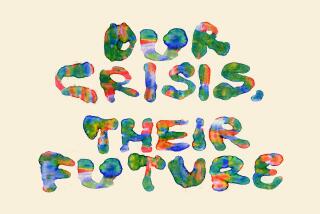FUTURE YOUTH (Editors of Prevention magazine Health Books: $29.95; 656 pp., 15 illustrations).
- Share via
Eighteen million joggers, countless patrons of health clubs, and health gurus, thousands of marketed self-help books, tapes and cassettes, a 10% decline in the consumption of animal fats in the U.S. diet--these and other signs point to the extraordinary national drive by individuals to enhance their health and attractiveness. This drive is not entirely new; 60 years ago, H. L. Mencken scornfully called us “a nation of hypochondriacs,” puritanically denying ourselves good food, drink and other pleasures.
What is new is the vastly increased biomedical knowledge of the complex functioning of the human organism, its genetic makeup, its relationships with its physical and social environment, and the reciprocal interactions of bodily and mental states. Illness and poor health are now often attributed to harmful and stressful “life styles.” The new knowledge has sparked a wide, self-conscious thrust toward health self-care, with the concerned individual acting to improve personal health practices and life style, often without help from MDs or other health professionals.
An influential pioneer in these efforts has been the widely read monthly magazine Prevention. Now, the editors of Prevention have issued this lengthy book (its curious title means that if its suggestions are followed, readers’ futures will embody some of the vigor of youth).
The book is a distillation of the general and specific self-care practices Prevention has been promoting for years. Its first 30 chapters, in alphabetical order, present ways of dealing with common health problems, from arthritis, back conditions, breathing, through headaches and hearing loss, to varicose veins.
The next 10 chapters deal with “looking better” or personal attractiveness: Eye, skin, hair and teeth care, weight regulation, dress, and other topics are discussed.
The final section, “A Year of Rejuvenation” outlines a 52-week personal program for improvement of physical-mental well-being, presented as easy to follow by oneself, inexpensive and effective. Like other Prevention materials, “Future Youth” is clearly and non-technically written, generally accurate and non-dogmatic, responsibly presenting selected research data on both sides of controversial issues and practices. It does not seek to discourage readers from consulting physicians, but rather to enlarge knowledge of what people can do for themselves. As such, this comprehensive self-care guide can be recommended as one of the most useful, complete, scientifically acceptable and broadly conceived works in the available self-help literature.
More to Read
Sign up for our Book Club newsletter
Get the latest news, events and more from the Los Angeles Times Book Club, and help us get L.A. reading and talking.
You may occasionally receive promotional content from the Los Angeles Times.








